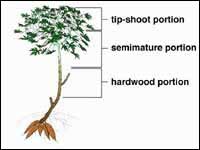Latest News

Researchers Get To The Root Of Cassava’S Cyanide-Producing Abilities
Cassava is the third-most important food source in tropical countries, but it has one major problem: The roots and leaves of poorly processed cassava plants contain a substance that, when eaten, can trigger the production of cyanide.
That’s a serious problem for the 500 million people who rely on cassava as their main source of calories, among them subsistence farmers in Sub-Saharan Africa, said Richard Sayre, a professor of plant biology at Ohio State University. He and his colleague Dimuth

Gene that controls susceptibility to tuberculosis discovered
Investigators at the Research Institute of the McGill University Health Centre (MUHC) have identified a gene that regulates the susceptibility to tuberculosis. This finding is published in this week’s edition of the Proceedings of the National Academy of Sciences.
Tuberculosis, an infectious disease caused by the bacteria Mycobacterium tuberculosis, affects approximately 1.9 billion people worldwide. However, a large proportion of these individuals do not develop tuberculosis symptoms. The

Heat zapps bone tumors
A team of radiologists and orthopedic specialists at Johns Hopkins Medicine has successfully used heat generated by electrode-tipped probes to destroy painful, benign bone tumors in eight of nine patients in a clinical study.
The results of the study, published in the March issue of the Journal of Vascular Interventional Radiology, suggests a need for further research to confirm the effectiveness of percutaneous radiofrequency for treating osteoid osteomas.
In the study, all eight

For best results, stick to one search engine
Web users who stick to one or two search engines and learn those well will have better results for their queries than users who try the same query or various engines, a Penn State researcher says.
“There are no wholesale rules about structuring a query that will work on multiple search engines,” said Bernard J. Jansen, assistant professor of information sciences and technology (IST). “And what works on one engine, such as narrowing a query, can have the opposite effect on other search engine

Setting boundaries between work and life helps families thrive
With the flexibility to check e-mail at home, get the kids ready for school, call your boss on the way to work, and text message your next appointment, the nature of work has changed. However, contrary to popular opinion, people who integrate their work and families are not always happier, Michigan State University researchers say.
Instead, Ellen Kossek, an MSU professor of Labor and Industrial Relations, found that people who establish boundaries between work and family are actually more

Astronomers map the hidden Universe
Astronomers from Cardiff University are completing the first survey ever for cosmic hydrogen, the primeval gas which emerged from the Big Bang to form all the stars and galaxies we can see today.
Since 1997 the astronomers, with their Australian colleagues, have been using two giant radio telescopes, the 64-metre diameter dish at Parkes in New South Wales, Australia, and the 76-metre dish at Jodrell Bank in Cheshire, England to build up an atlas of the heavens as mapped by cosmic hydrogen.











